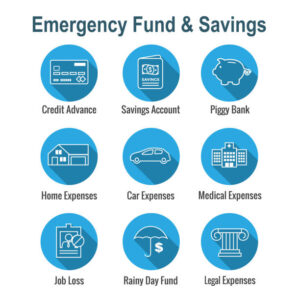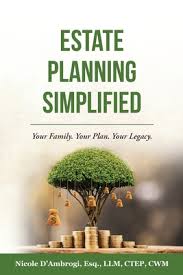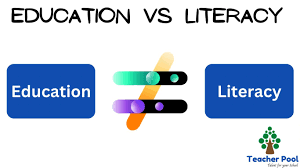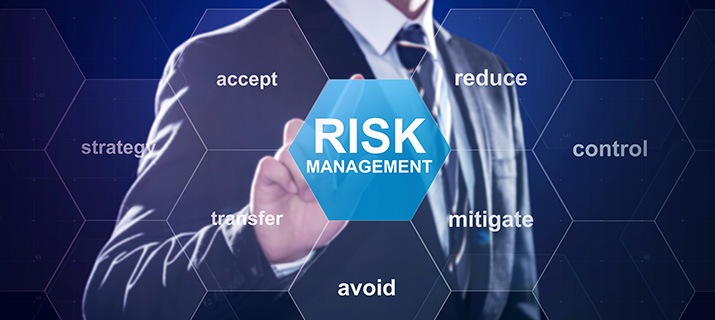Retirement planning might feel like a luxury when you’re self-employed. You’re juggling clients, deadlines, and the daily hustle, so thinking about life decades down the road can be tough. But here’s the truth: over 30 million Americans are self-employed, and many of them don’t have a traditional retirement plan waiting for them. Unlike employees with a company 401(k) or pension, you’re on your own. That means no automatic savings, no employer match, and no safety net.
So, how do you make sure you don’t end up struggling financially when it’s time to stop working? How can you turn the sweat and effort you put in today into a comfortable, worry-free retirement?
This guide will walk you through seven practical, expert-backed tips to plan your retirement successfully as a self-employed individual. Even if you’re a freelancer, small business owner, or solo entrepreneur, these steps will help you build a retirement plan that fits your unique lifestyle.

—
1. Know What You Need: Set Clear Retirement Goals
Before you start saving, you need to know what you’re saving for. Retirement isn’t just about covering bills; it’s about living the life you want after work slows down. And that means understanding how much money you’ll need.
Why This Matters
Many people underestimate how much money they’ll need in retirement by as much as 30%. That’s a big gap that can leave you scrambling later. A study from the University of Michigan found that healthcare costs alone can consume nearly 20% of retirement savings if you don’t plan ahead. And healthcare isn’t the only expense—think about housing, food, travel, hobbies, and unexpected emergencies.
How to Set Your Goals
Start by imagining your ideal retirement. Do you want to travel the world? Move to a smaller home? Spend more time with family? Each choice affects how much money you’ll need.
Mark Singer, a financial advisor with over two decades of experience, puts it simply: “The biggest mistake people make is not having a number in mind. You can’t hit a target you can’t see.”
Action Steps:
- Use free online retirement calculators (like those from [Vanguard](https://investor.vanguard.com/tools-calculators/retirement-income-calculator) or [Fidelity](https://www.fidelity.com/calculators-tools/retirement-income-calculator)) to estimate your future expenses.
- Write down your retirement goals and revisit them yearly to adjust as your life changes.
- Consider inflation—things cost more over time, so your retirement savings need to grow accordingly.
—
2. Pick the Right Retirement Plan for Your Business
Choosing the right retirement plan is crucial. As a self-employed person, you don’t have a one-size-fits-all option. There are several plans designed specifically for people like you, each with its own pros and cons.
If you work solo with no employees, a Solo 401(k) might be your best bet. It lets you contribute both as the employee and the employer, meaning you can save up to $66,000 in 2025. This plan also offers great tax advantages, allowing your money to grow tax-deferred.
If your income varies or you want more flexibility, a SEP IRA is worth considering. It allows you to contribute up to 25% of your income or $70,000, whichever is less. This plan is easy to set up and maintain, making it popular among freelancers.
For those who have a small team, a SIMPLE IRA might be better. It has lower contribution limits—up to $17,000 in 2025 plus an employer match—but it’s simpler to manage than a full 401(k) plan.
Finally, don’t forget traditional and Roth IRAs. Anyone with earned income can open one, but the contribution limits are lower ($6,500 or $7,500 if you’re over 50). Roth IRAs are especially attractive if you expect your tax rate to be higher in retirement because withdrawals are tax-free.
What Experts Say:
A 2023 report by 360 Financial highlights that the best plan depends on your income, business size, and how much you want to save. Don’t just pick the first plan you hear about—compare benefits carefully and choose what fits your situation best.
—
3. Start Saving Early and Stay Consistent
If there’s one golden rule in retirement planning, it’s this: start early and keep at it. Time is your best friend because of compound interest—the process where your money earns interest, and then that interest earns interest, and so on.
Why Timing Matters
PNB MetLife’s research shows that people who save consistently, even small amounts like $100 a month, end up with more money than those who save large sums sporadically. The key is habit and discipline.
Suze Orman, a well-known financial expert, once said, “No one has ever achieved financial fitness with a January resolution that’s abandoned by February.” Making saving automatic helps you avoid this trap.
How to Make It Work
- Automate your savings by setting up monthly transfers from your checking account to your retirement account.
- Increase your contributions whenever your income rises.
- Don’t be discouraged if you can’t save a lot at first. Even small amounts add up over time.
Example: If you start saving $200 a month at age 30, assuming an average 7% annual return, you could have over $600,000 by age 65. Start 10 years later, and you might only have half that.
—
4. Diversify Your Investments to Manage Risk
Putting all your money in one place is risky. Markets go up and down, and you don’t want your entire retirement savings to be wiped out by a single event.
What Does Diversification Mean?
It means spreading your money across different types of investments like stocks, bonds, real estate, and mutual funds. Each behaves differently depending on the economy.
Why It’s Important
Research shows many self-employed people keep their savings in cash or one type of investment, which can hurt growth or increase risk. A diversified portfolio balances potential returns with safety.
How to Diversify
– Include a mix of stocks (growth potential) and bonds (stability).
– Consider real estate or other alternative investments if you’re comfortable.
– Adjust your mix as you get closer to retirement, shifting toward safer investments.
Tip: If you’re unsure, a financial advisor can help you design a portfolio that fits your risk tolerance and timeline.
—
5. Build an Emergency Fund

Life is unpredictable. Medical emergencies, car repairs, or a slow business month can force you to dip into your retirement savings if you don’t have a backup.
Why You Need an Emergency Fund
Financial experts recommend saving 3 to 6 months of living expenses in a separate, liquid account. This fund acts as a financial cushion.
How to Build It
- Start small. Even $500 is better than nothing.
- Put aside a fixed amount monthly until you reach your goal.
- Keep this fund separate from your retirement accounts.
This way, you protect your retirement savings and avoid penalties or taxes from early withdrawals.
—
6. Review Your Plan Regularly and Adjust as Needed
Your business and life will change. Income might rise or fall, expenses shift, or your retirement goals evolve. If you don’t review your plan regularly, you might find yourself off track.
Why Regular Reviews Matter
According to the Pew Trusts, many self-employed people near retirement age are underprepared because they never updated their plans.
What to Review
- Your savings rate: Are you contributing enough?
- Your investment mix: Is it still aligned with your risk tolerance?
- Your goals: Have your retirement plans changed?
Action Steps:
- Set a yearly reminder to review your retirement plan.
- Adjust contributions or investments as needed.
- Consult a financial advisor for a check-up.
—
7. Get Professional Help When You Need It
Retirement planning can be complex. Tax rules, investment options, and savings strategies can feel overwhelming.
Why a Financial Planner Helps
Mike Rogers, founder of 360 Financial, says, “If you’re unsure, don’t hesitate to work with a financial planner. They can help you make sense of your options and create a plan that works.”
A good planner will tailor advice to your situation, help you avoid costly mistakes, and keep you accountable.
How to Find a Planner
– Look for a Certified Financial Planner® (CFP®).
– Check reviews and ask for referrals.
– Make sure they understand self-employment challenges.
—
Frequently Asked Questions (FAQs)
Q1. Can I open a 401(k) if I’m self-employed?
A: Absolutely! The Solo 401(k) is designed for self-employed individuals with no employees.
Q2. How much should I save each month?
A: Aim for 15-20% of your income, but start where you can and increase over time.
Q3. What if my income is irregular?
A: Save more during good months and keep an emergency fund to cover lean periods.
Q4. Are there tax benefits to self-employed retirement plans?
A: Yes, many plans offer tax-deferred growth or tax-free withdrawals, depending on the type.
Q5. When should I start planning for retirement?
A: The best time is now. The earlier you start, the more time your money has to grow.
—
Planning for retirement when you’re self-employed isn’t easy, but it’s absolutely possible. It’s about knowing your goals, choosing the right plans, saving consistently, and staying flexible. Remember, as financial expert Robert Kiyosaki says, “It’s not how much money you make, but how much money you keep, how hard it works for you, and how many generations you keep it for.”
So, what’s stopping you from taking control of your financial future today?
—
Useful Resources
– [IRS Retirement Plans for Self-Employed](https://www.irs.gov/retirement-plans/one-participant-401k-plans)
– [Vanguard Retirement Calculator](https://investor.vanguard.com/tools-calculators/retirement-income-calculator)
– [Fidelity Retirement Calculator](https://www.fidelity.com/calculators-tools/retirement-income-calculator)
– [360 Financial](https://360financial.com/)










Awesome post. http://balikesir.ogo.Org.tr/question/consultation-voyance-par-tarot-a-laval-trouvez-des-reponses-a-vos-questions/
x152gt
crej79
jnahja